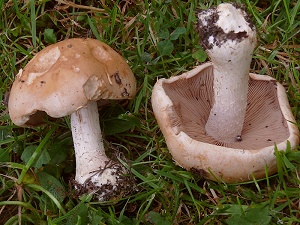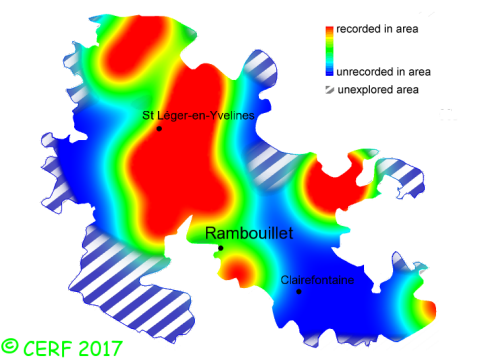| Hebeloma sinapizans (Paulet) Sacc. |
|
|
|
|
|
|
The cap is cream to leather or rusty yellow. The cap surface is smooth, viscid in wet weather. The stem is white turning brown, without ring. The flesh is whitish, unchanging; its taste is bitter; the odour is of radish or raw potato; its texture is fibrous. The gills are pale then cinnamon brown, emarginate, crowded . The spore print is brown. This species is mycorrhizal. It grows on the ground, in deciduous or mixed woods, on a rather calcareous soil, with beech, oak, hornbeam. The fruiting period takes place from July to November.
Chemical tests : none. Distinctive features : hollow stem, containing a hanging piece of flesh from the cap; stem covered with banded scales; very bitter taste; gills without droplets; large size Hebeloma sinapizans is infrequent and scattered in the forest of Rambouillet, and is occasional, more generally speaking . | ||
|
page updated on 14/01/18

